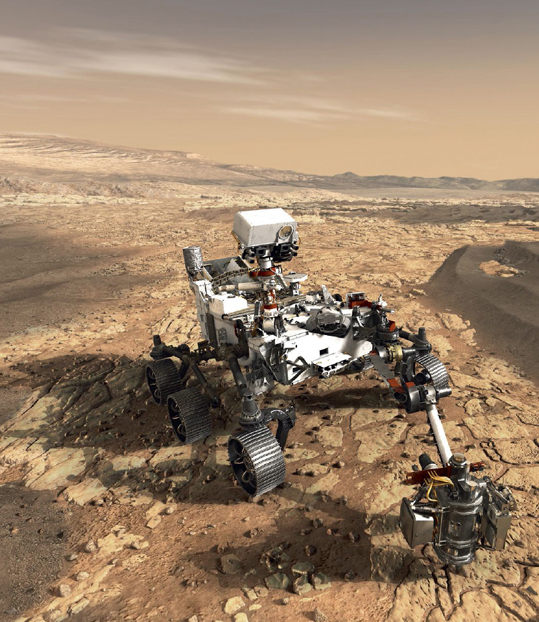2020
Start of Mars Sample Return
According to a recent US National Academy of Sciences planetary science community survey, the most important large, flagship-class robotic mission for NASA to start in the decade from 2013 to 2022 is a new Mars rover that will explore an astrobiologically promising site and cache samples for a future robotic mission to return to Earth later in the 2020s. And, indeed, NASA has set out to achieve that goal by selecting a new rover, presently called simply Mars 2020 because of the year of its intended launch, to go to Mars and cache those samples.
The Mars 2020 rover is being built from more than 90 percent spare parts from the Curiosity rover, to save money and time, and thus it bears a striking resemblance to that sibling vehicle. However, its instrumentation, mission goals, operational strategy, and landing site will be significantly different from Curiosity’s. For example, the drilling system has been replaced by a coring and caching system, and the scientific instruments have been updated to provide new capabilities focused on enabling the best possible selection of materials to cache as well as a robust assessment of the geologic context of the landing site and the specific locations of those samples. The rover’s landing site won’t be selected until closer to launch, but the finalists include ancient terrains where the geology and mineralogy are already known to favor the preservation of potential biosignatures (materials or textures that provide scientific evidence of past or present life) that could be collected for eventual return to Earth.
If all goes well, the rover will land safely on Mars in early 2021, and by the end of the Mars 2020 prime mission in 2023 perhaps as many as thirty to forty sample tubes, filled with rock, soil, and atmospheric gases, will be ready to retrieve. Then, sometime later in the 2020s, via one or more new robotic missions that are only now being formulated, those sample tubes will be collected, launched off Mars, and returned to Earth. Detailed analysis of those samples in terrestrial laboratories will yield a much more precise assessment of their chemical, mineral, and perhaps even organic molecule content than rovers or landers on Mars could perform, and will provide critical environmental data needed to realize the next big NASA Mars goal—sending humans to the Red Planet in the 2030s.
SEE ALSO Mars (c. 4.5 Billion BCE), Vikings on Mars (1976), First Rover on Mars (1997), Spirit and Opportunity on Mars (2004), Mars Science Laboratory Curiosity Rover (2012).
Artist’s rendering of the NASA Mars 2020 rover, drilling a rock core to be cached for a later mission to return to Earth.
